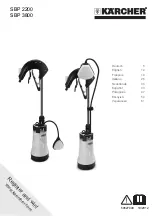
146
IBM Power 770 and 780 (9117-MMD, 9179-MHD) Technical Overview and Introduction
2. Move the logical partition to the processor-based server. Both the current
and preferred modes remain unchanged for the logical partition until you restart the
logical partition.
3. Restart the logical partition on the processor-based server. The hypervisor
evaluates the configuration. Because the preferred mode is set to default and the logical
partition now runs on a processor-based server, the highest mode available is
the mode. The hypervisor determines that the most fully featured mode that is
supported by the operating environment installed in the logical partition is the POWER7
mode and changes the current mode of the logical partition to the POWER7 mode.
Now the current processor compatibility mode of the logical partition is the POWER7 mode,
and the logical partition run on the POWER7 processor-based server.
The Virtual I/O Server on the source system provides the access to the client resources and
must be identified as a mover service partition (MSP). The Virtual Asynchronous Services
Interface (VASI) device allows the mover service partition to communicate with the hypervisor.
It is created and managed automatically by the managed console and will be configured on
both the source and destination Virtual I/O Servers, which are designated as the mover
service partitions for the mobile partition, to participate in active mobility. Other requirements
include a similar time-of-day on each server, systems must not be running on battery power,
and shared storage (external hdisk with
reserve_policy=no_reserve
). In addition, all logical
partitions must be on the same open network with RMC established to the managed console.
The managed console is used to configure, validate, and orchestrate. You use the managed
console to configure the Virtual I/O Server as an MSP and to configure the VASI device. An
managed console wizard validates your configuration and identifies issues that can cause the
migration to fail. During the migration, the managed console controls all phases of
the process.
Improved Live Partition Mobility benefits
The possibility to move partitions between POWER6, POWER7, and
processor-based servers greatly facilitates the deployment of processor-based
servers, as follows:
Installation of the new server can be done while the application is executing on a
POWER6 or POWER7 server. After the processor-based server is ready, the
application can be migrated to its new hosting server without application down time.
When adding processor-based servers to a POWER6 and POWER7
environment, you get the additional flexibility to perform workload balancing across the
entire set of POWER6, POWER7, and processor-based servers.
When doing server maintenance, you get the additional flexibility to use POWER7 Servers
for hosting applications usually hosted on processor-based servers, and vice
versa, allowing you to perform this maintenance with no application planned down time.
For more information about Live Partition Mobility and how to implement it, see IBM PowerVM
Live Partition Mobility, SG24-7460.
Tip: The “Migration combinations of processor compatibility modes for active Partition
Mobility” web page offers presentations of the supported migrations:
http://pic.dhe.ibm.com/infocenter/powersys/v3r1m5/index.jsp?topic=/p7hc3/iphc3p
cmcombosact.htm
Содержание Power 770
Страница 2: ......
Страница 14: ...xii IBM Power 770 and 780 9117 MMD 9179 MHD Technical Overview and Introduction ...
Страница 134: ...120 IBM Power 770 and 780 9117 MMD 9179 MHD Technical Overview and Introduction ...
Страница 172: ...158 IBM Power 770 and 780 9117 MMD 9179 MHD Technical Overview and Introduction ...
Страница 218: ...204 IBM Power 770 and 780 9117 MMD 9179 MHD Technical Overview and Introduction ...
Страница 219: ......
















































